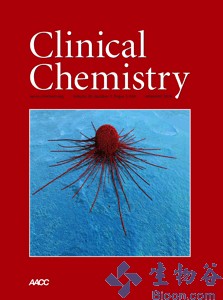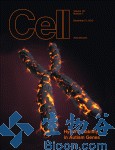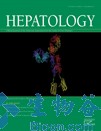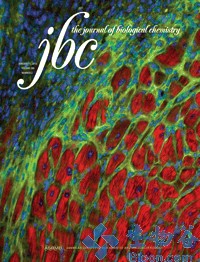Clin Chem.:癌细胞发生发展的新模型
2013-02-07 张迪 Clin. Chem.
鼎鼎大名的Robert A.Weinberg教授身上笼罩着一道道绚丽的光环:美国科学院院士,世界著名Whitehead研究所创始人之一,他曾发现了第一个人类癌基因Ras和第一个抑癌基因Rb,他的一系列杰出研究工作已经成为肿瘤研究领域乃至整个医学生物学领域的重要里程碑。 Weinberg教授撰写的两篇关于肿瘤细胞十大特征的综述文章,常年是Cell杂志最受关注的论文之一,也被多次引用,近期他与其他几
鼎鼎大名的Robert A.Weinberg教授身上笼罩着一道道绚丽的光环:美国科学院院士,世界著名Whitehead研究所创始人之一,他曾发现了第一个人类癌基因Ras和第一个抑癌基因Rb,他的一系列杰出研究工作已经成为肿瘤研究领域乃至整个医学生物学领域的重要里程碑。
Weinberg教授撰写的两篇关于肿瘤细胞十大特征的综述文章,常年是Cell杂志最受关注的论文之一,也被多次引用,近期他与其他几位科学家一道,完成了题为“Cell plasticity and heterogeneity in cancer”的综述性文章,详细介绍了癌细胞发生发展的新模型。
癌症异质性是恶性肿瘤重要特征之一,这种异质性可以表现在肿瘤分化水平及肿瘤功能水平上,出现异质性的抗原表达或出现不同生物特性细胞亚群。这种肿瘤异质性特性往往给肿瘤的研究和治疗带来极大的困难。
癌症异质性是由癌细胞中遗传和表观遗传差异造成的,这些因素共同作用,导致了带有不同表型的疾病表象出现,目前关于癌症发展和扩散有两种模型,也就是克隆进化模型,以及癌症干细胞模型。
在这篇综述中,研究人员探讨了这两种模型。其中克隆进化(clonal evolution)模型认为,肿瘤起源于正常细胞,这些细胞突变并产生了异常的后代,而后代细胞又发生突变,形成大量的变异癌细胞。
而癌症干细胞假说则认为,肿瘤是被一个单一的、成体干细胞异常型所引发和驱动。而且,正常干细胞功能必须的几个途径和基因在癌细胞中被活化,在肿瘤形成过程中起到关键作用。极个别能促进癌症形成的自我更新干细胞很难被杀死,并且它们顽强的生命力可以解释为什么肿瘤常常在成功治疗后仍然会复发。
研究人员指出,前者模型认为微环境选择压力导致了连续突变的积累,出现了肿瘤,后者则表明具有相同遗传背景的癌细胞能根据其致癌潜力,分层组织,癌症干细胞位于这一层级的顶端,具有肿瘤起始和扩散的能力。
后面这种模型的一大特点就是其明显的单向性,即癌症干细胞进行对称分裂,来补充干细胞池,也进行不对称分裂,产生具有低致癌性的子细胞(非癌症干细胞)。
然而不断出现的研究新成果又提出了一种新型致癌性模型,就是在非癌症干细胞和癌症干细胞之间存在相当大的可塑性,如非癌症干细胞可以重新恢复癌症干细胞的表型。这些发现表明,一些肿瘤可能就遵循着可塑性癌症干细胞模型,可以进行双向转换,这很常见,也是致癌性的重要组成部分。
目前已有越来越多的证据支持癌细胞的可塑性,尤其是研究发现侵袭性的癌症干细胞会在一个肿瘤中再次出现。鉴于目前不少治疗焦点都靶定在癌症干细胞上,研究人员也进一步探讨了非癌症干细胞-癌症干细胞转换对于未来治疗的影响。
除此之外,需要提出提醒的是,Weinberg教授研究组此前的一篇文章:Ras Modulates Myc Activity to Repress Thrombospondin-1 Expression and Increase Tumor Angiogenesis,由于数据图片处理方面的问题被撤回,如有这方面的引用和相关研究,请多注意。

doi: 10.1373/clinchem.2012.184655
PMC:
PMID:
Cell Plasticity and Heterogeneity in Cancer
Nemanja D. Marjanovic1, Robert A. Weinberg1,2 and Christine L. Chaffer1,*
BACKGROUND: Heterogeneity within a given cancer arises from diverse cell types recruited to the tumor and from genetic and/or epigenetic differences amongst the cancer cells themselves. These factors conspire to create a disease with various phenotypes. There are 2 established models of cancer development and progression to metastatic disease. These are the clonal evolution and cancer stem cell models. CONTENT: The clonal evolution theory suggests that successive mutations accumulating in a given cell generate clonal outgrowths that thrive in response to microenvironmental selection pressures, dictating the phenotype of the tumor. The alternative cancer stem cell (CSC) model suggests that cancer cells with similar genetic backgrounds can be hierarchically organized according to their tumorigenic potential. Accordingly, CSCs reside at the apex of the hierarchy and are thought to possess the majority of a cancer's tumor-initiating and metastatic ability. A defining feature of this model is its apparent unidirectional nature, whereby CSCs undergo symmetric division to replenish the CSC pool and irreversible asymmetric division to generate daughter cells (non-CSCs) with low tumorigenic potential. However, evolving evidence supports a new model of tumorigenicity, in which considerable plasticity exists between the non-CSC and CSC compartments, such that non-CSCs can reacquire a CSC phenotype. These findings suggest that some tumors may adhere to a plastic CSC model, in which bidirectional conversions are common and essential components of tumorigenicity. SUMMARY: Accumulating evidence surrounding the plasticity of cancer cells, in particular, suggests that aggressive CSCs can be created de novo within a tumor. Given the current focus on therapeutic targeting of CSCs, we discuss the implications of non-CSC-to-CSC conversions on the development of future therapies.
本网站所有内容来源注明为“梅斯医学”或“MedSci原创”的文字、图片和音视频资料,版权均属于梅斯医学所有。非经授权,任何媒体、网站或个人不得转载,授权转载时须注明来源为“梅斯医学”。其它来源的文章系转载文章,或“梅斯号”自媒体发布的文章,仅系出于传递更多信息之目的,本站仅负责审核内容合规,其内容不代表本站立场,本站不负责内容的准确性和版权。如果存在侵权、或不希望被转载的媒体或个人可与我们联系,我们将立即进行删除处理。
在此留言













#发生发展#
60
#癌细胞#
59